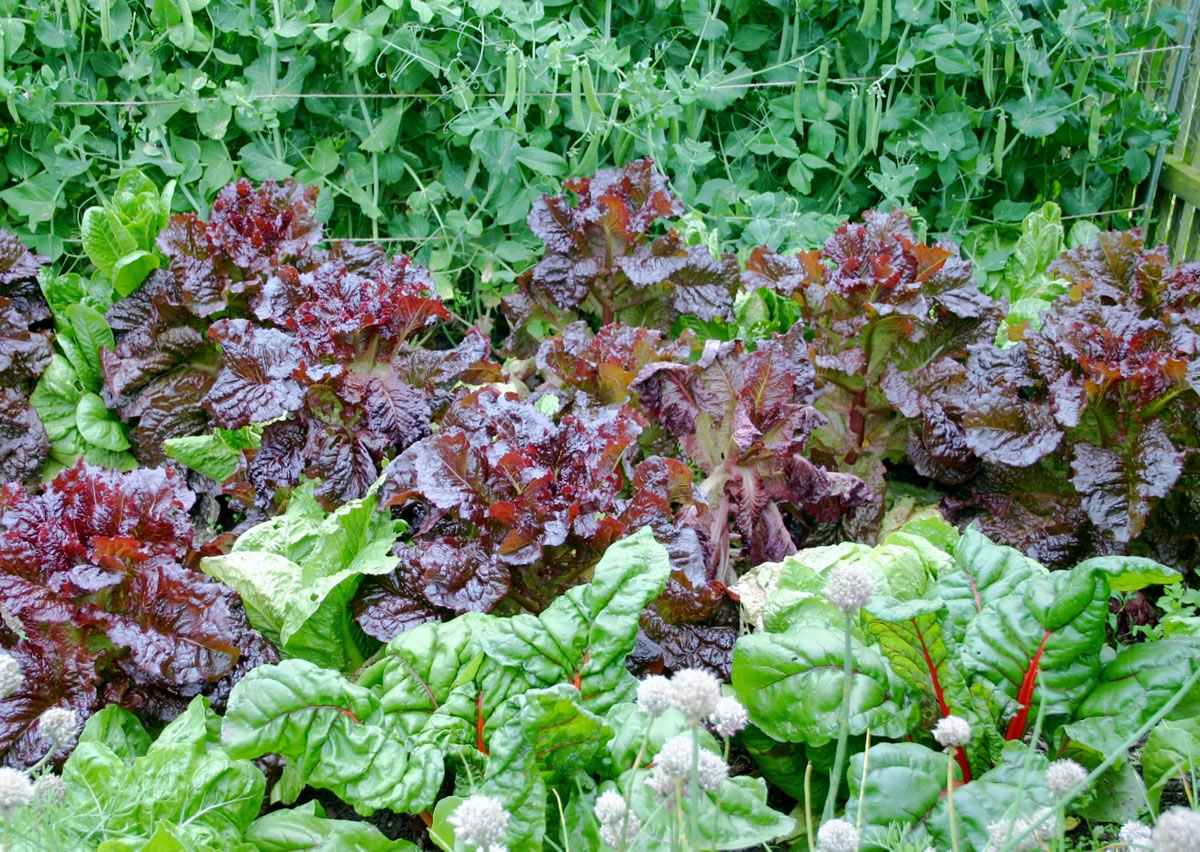Most of us grew up thinking that vegetable gardening and flower gardening were two very separate entities. If a vegetable gardener heard that you were a gardener, he or she would ask, “What do you grow,” waiting to hear your list of favorite vegetables. Flower gardeners or gardeners interested in gardening to beautify the landscape typically ask what kind of garden you have or what type of plants you like to grow.
The reason I have come around to merging both types of gardening in my garden was to expand the garden palette further. Instead of thinking that my vegetable garden had to feed the world, I decided to plant small pockets of vegetables that I truly love or cannot buy at the market. In addition, I set about making my vegetable plot as decorative as the rest of the garden. In the process, I began to see vegetables for the beautiful garden plants they can be.
Sugar snap peas are a sure thing in the Pacific Northwest garden. The Super Sugar Snap varieties climb quickly to a height of 5 or 6 feet and begin their show with delicate white flowers where the pea pod will soon emerge. The plump, 4-inch-long pods are perfect for picking and eating right off the vine and they really do snap as you bite through the skin.
Lettuce is so easy to grow, even if your garden is nothing more than a large pot or planter. I recommend a mix of lettuces called mesclun. Mesclun is the Provencal term given to a mixture of tender young lettuces and greens. These are traditionally sold as an assortment of plants or seeds in a combination of colors, textures and tastes. Lettuces are easy and inexpensive. Since taste is so subjective, try several varieties and keep track of your favorites.



